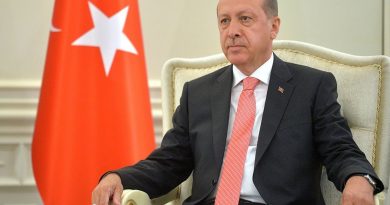Recent trends in foreign direct investment in the global economy
Foreign direct investment (FDI) constitutes a key aspect of the global economy today and is generally seen as an essential source of socio-economic development. The drastic drop in the global FDI flows at the onset of the global financial crisis in 2008 thus generated widespread concern. Notwithstanding some recovery since then, the latest report published by the United Nations Conference on Trade and Development (UNCTAD) confirms that the path towards recovery remains bumpy. FDI inflows shrank again in 2016. Some regions and countries, were of course, more affected than others.
Advanced industrialized countries still attract a dominant (59 percent) part of FDI. Political changes notwithstanding, the United States (US) and the United Kingdom (UK) remained the two top destinations of FDI flows. Developing countries attracted a smaller and diminishing (by 14 percent) share, even as FDI constitutes the most substantial and stable form of international finance in these economies, relative to portfolio investments, remittances and development aid.

In the EU, Brexit has (so far) had a limited impact on FDI flows to the UK
Despite the Brexit vote, FDI to the UK has in fact risen at an unprecedented rate in 2016, owing mainly to the completion of major mergers and acquisitions (M&A), such as the acquisition of SAB Millers by Belgium’s Anheuser-Busch Inbev. The EU followed a similar trend of growth in inflows of FDI, albeit at a more modest rate. The expansion in the influence of European companies abroad slowed down over 2016 as FDI outflows declined by 12 percent.
While the number of foreign investment projects increased in Portugal in 2016, the total value of FDI inflows declined by 12 percent compared to those registered in 2015. The total amount of 6 billion USD (out of the EU’s total of 566 billion) was nonetheless proportional to Portugal’s relative economic importance in the economic community. The amount of investments of Portuguese companies abroad fell even more drastically at 75 percent.
Angola emerges as major investor among the CPLP countries
The Community of Portuguese Speaking Countries (CPLP), that Portugal is a member of along with eight other Portuguese speaking countries, is a net recipient of FDI. The group received proportionately more FDI in relation to its approximately 3 percent share of world GDP, even as it shrank by 10 percent relative to the previous year. Most of these investments concentrated in the large market of Brazil (71%), followed by the much smaller Angolan (17%) and Portuegese economies (7%). Both Brazil and Angola have, in fact, been among the top 20 host economies of FDI in 2016.
The significance of the group as a provider of FDI in 2016 was much smaller. In the context of ongoing economic and political crisis, Brazilian companies have been divesting from their businesses abroad. One such example was Petrobras which has put up for sale its refinery assets located in the United States, Japan and Africa.
FDI outflows from Angola, on other hand, increased significantly (by 37%), due mainly to the investments by the state-owned petroleum and natural gas MNE Sonangol. As a result, Angola constituted the largest African investor in 2016. This, however was not sufficient to offset the major decline of investments from Brazil and Portugal.
The BRICS and the rising Influence of state-owned multinational companies
Brazilian divestments notwithstanding, companies from most other major emerging economies that constitute the BRICS group – Russia, India, China and South Africa – have continued to demonstrate an increasingly active involvement in investments abroad. FDI from these countries continued to rose significantly, at a rate of 21 percent in 2016.
This has contributed to the rising influence of State-Owed MNEs (SO-MNEs) that originate primarily from major emerging economies, particularly from China and Russia. These companies tend to locate their foreign affiliates in developed economies, generating considerable controversy in several countries from North America and Europe.
China became the second largest investing country in 2016 for the first time (increase of 44 percent), after the United States. The divergent pathways followed by Chinese and Brazilian companies in terms of their influences abroad, raises questions about the usefulness of considering the BRICS as a coherent group.
Photo by Hans Splinter / CC BY-ND 2.0
![]() This work is licensed under a Creative Commons Attribution-NonCommercial-ShareAlike 4.0 International License.
This work is licensed under a Creative Commons Attribution-NonCommercial-ShareAlike 4.0 International License.




